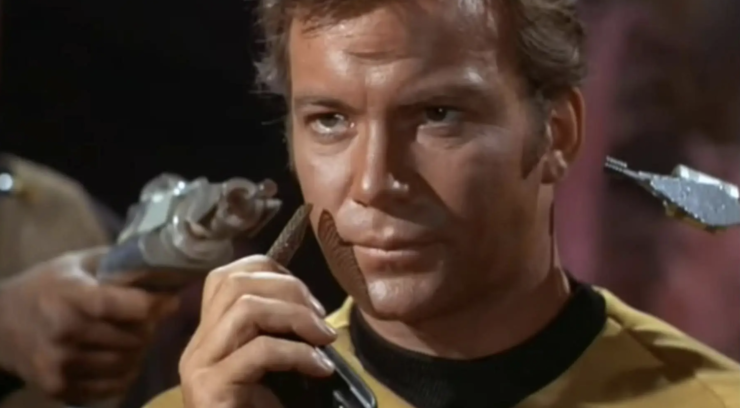Most SF authors love ubiquitous teleportation and planetary range communications until the plot of their latest work depends on being stuck in one place or being unable to call for help. Writers—not just SF writers—have wrestled with this and related issues for decades. Here are five ways authors have avoided being painted into a corner by the technology available to their characters.
The Kinsey Millhone solution
It might seem counterintuitive to mention a mundane mystery character here, rather than focusing on the speculative…but this case is so apropos that I cannot refrain. The widespread adoption of cellphones (not to mention the internet: see next entry) rendered a number of stock mystery plot elements obsolete. Sue Grafton’s solution was to set all twenty-five Kinsey Millhone novels in the 1980s, before plot-destroying communications technology became widespread.
The Net of a Million Lies solution
Just because one has easy access to a planetary or even galactic network does not mean that one will be able to find reliable information on it, or that one will understand the significance of the few nuggets of truth one finds amid the dross. Vernor Vinge’s now quite venerable A Fire Upon the Deep (1992) touches on this: efforts to resolve a galactic-scale existential threat are complicated by energetic disinformation campaigns, as well as by problems posed by translation issues. The truth is out there…but so are plausible lies and misunderstandings, all of which greatly outweigh the truth.
The Future Is Unevenly Distributed solution
It takes time for new technologies, no matter how convenient, to become available everywhere. This can be particularly true of items dependent on some external infrastructure, like a mobile phone network, the internet, or even the humble road. In the backstory to Lois McMaster Bujold’s Vorkosigan stories, the planet Barrayar has been isolated for centuries due to the collapse of a local wormhole on which interstellar travel depends. Technology commonplace elsewhere was unknown on Barrayar, because there was no way to reach Barrayar and thus no way to import innovations.
The Subspace Storm solution
No technology is one hundred percent reliable. Local or transient conditions may preclude use. A notable example comes from vintage television: Star Trek’s transporter was both a convenience for the writers (no need for time-consuming, expensive special effects showing shuttle craft landing each episode) and a curse (the characters are never more than a hasty communicator call away from being snatched from the jaws of danger). A frequent solution was some form of interference preventing communicators or transporters (or both) from working for as long as the plot required.
The Sky Is Full of Wolves solution
Many forms of technology produce recognizable signatures over surprising distances. If one has good reason to believe enemies will use those signatures to target one, then strongly discouraging use of those technologies is simple self-preservation. In Paul McAuley’s Four Hundred Billion Stars (1988), the so-called Enemy avoids using faster-than-light drives. Such drives are visible over tens of thousands of light years and the Enemy fear alerting the marauders at the galactic core to their hiding place. Alas, nobody warned humans about this issue, which is why humans use FTL drives in abundance.
***
These are only a few of the coping mechanisms and strategies authors have embraced in order to work around potentially inconvenient tech. Perhaps I’ve missed your favourites. If so, feel free to mention them in comments, which are, as ever, below.
In the words of fanfiction author Musty181, four-time Hugo finalist, prolific book reviewer, and perennial Darwin Award nominee James Davis Nicoll “looks like a default mii with glasses.” His work has appeared in Interzone, Publishers Weekly and Romantic Times as well as on his own websites, James Nicoll Reviews (where he is assisted by editor Karen Lofstrom and web person Adrienne L. Travis) and the 2021 and 2022 Aurora Award finalist Young People Read Old SFF (where he is assisted by web person Adrienne L. Travis). His Patreon can be found here.










